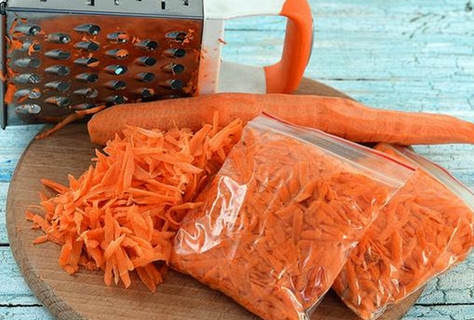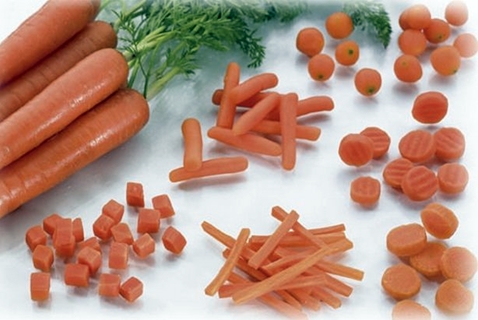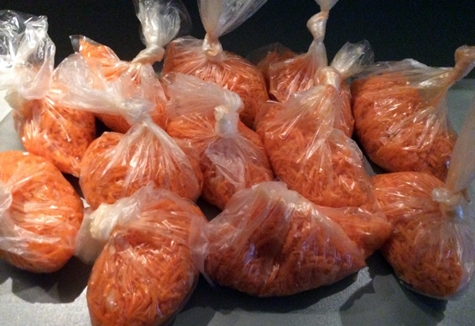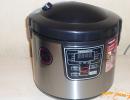How to freeze carrots for the winter in the freezer at home
There are several ways to freeze carrots for the winter. But in order to preserve all the valuable properties of the product, you need to know how to do it correctly. You should prepare the vegetables themselves and the necessary equipment.
Many people wonder whether it is possible to freeze carrots and whether the beneficial substances are retained in them? If you follow all the rules, then all the vitamins will be preserved, and the grated product can be easily added to any dish without wasting time.
Reasons why many housewives prefer to store vegetables in the freezer.
- Saving money. In winter, vegetables are much more expensive; it is much more pleasant to take an already prepared product from the refrigerator without leaving home.
- It is unknown under what conditions the product is stored in store conditions. In addition, winter vegetables on the shelves often undergo additional processing for better storage and flavor. Therefore, when you take your carrots out of the freezer, you can be sure that they are environmentally friendly.
- Save time. When starting to cook, you don’t need to waste time peeling and chopping vegetables. Is everything ready!
- It happens that there is nowhere to store vegetables from your garden. In this case, the freezer comes to the rescue. Not everyone has spacious cellars and basements (in addition, in these rooms it is also necessary to maintain the correct conditions).
A small root vegetable with a dense structure and a sweetish taste is suitable for freezing. Carrots can be stored either whole or chopped.
It is not necessary to buy a freezer for storage; many refrigerators have a freezer, in which any vegetables, including carrots, should be stored for a long time. Transfer to a regular refrigerator compartment only when gradual defrosting of the product is required.
Preparation rules
Freezing carrots for the winter at home should follow all the rules, then all the vitamins will remain intact.
Vegetables must be carefully selected. You should not freeze old, rotten root vegetables that have been eaten away by pests. After selection, you need to wash the carrots, clean them of dirt and dust, and cut off the ends.
The next step is blanching. Prepare two containers with water. In one you need to boil water, in the other you need to pour ice water. Large root vegetables are dipped in boiling water for 4 minutes, small ones are enough to hold for two minutes. After this, the vegetables are immediately placed in ice water. Thanks to cold water, the vegetable will not be completely cooked, but will remain fresh and crispy.
Root vegetables are distributed on a towel and left until completely dry. Clean, dry carrots are cut in any way: into cubes, rings and strips. Can be crushed using a grater. It all depends on what dish the cutting is intended for.
To prevent pieces of vegetables from freezing to each other, you need to lay them out in layers on a regular wooden board and put them in the freezer for 1.5 hours. Then collect them in one pile. After this procedure, the vegetable slices will be stored without sticking.
For freezing, it is better not to choose plastic bags and glassware. The first option may tear, and the second may crack due to low temperature.
The best choice would be plastic containers. They are filled with the product, not reaching the edge of 1 cm. You can use vacuum bags, which are secured with paper clips, adhesive tape or special clips.

It is recommended to indicate on each package or container the date and time when the product was packaged. Plastic cups and containers for storing ice can also serve as containers for freezing the product.
It is best to maintain the storage temperature in the freezer for vegetable preparations below -18 degrees. The higher the temperature, the shorter the shelf life of the frozen product. For example, at a temperature of -8 degrees, carrots can be stored for no more than three months.
Freezing methods
There are several basic and popular ways to freeze carrots for the winter in the freezer.
The most common option is to freeze fresh chopped carrots:
- You can put all the crushed mass in one bag and roll it up into a stick, cut off the required amount of carrots as needed;
- you can simply transfer the cooked carrots into a large bag, but after two hours in the freezer, you need to shake the bag so that the chopped strips do not freeze to each other;
- You can divide the vegetable mass into portions.
Option with a preparatory stage involving blanching:
- carrots are cut into separate pieces in any shape, but of the same size;
- All chopped slices are immersed in boiling water for two minutes;
- then the vegetables need to be cooled by placing them in ice water for three minutes;
- distribute the pieces on a towel and let them dry;
- vegetables are ready to be frozen.

Carrot puree (this option is ideal for those with small children):
- carrots are peeled and cut into slices;
- chopped vegetables are poured with water and, after boiling, boiled for about 40 minutes;
- cooked root vegetables are mashed with a fork or chopped using a blender;
- the resulting puree-like mass is placed in ice cube trays or any other small plastic container after final cooling (in order for the puree to cool faster and not darken, you need to immerse the container with the contents in cold water);
- at a temperature of -18 degrees, the contents of the molds are frozen for three hours;
- then the vegetable cubes are removed from the molds and put into bags.
In winter, this puree can be given to small children or added to various porridges and soups during cooking. They dissolve easily and give the dish a pleasant taste.
Frying with onions (you can add other vegetables):
- carrots are peeled and grated;
- cut the onion into small slices;
- chopped vegetables are placed in a frying pan with oil and simmered for approximately 35 minutes;
- Once the vegetables have cooled, you can start freezing.
After the cuttings are distributed among the containers, they must be tightly closed so that the carrots do not absorb neighboring odors.
A frozen carrot dish, if the preparation technology is followed, can be stored for about a year. After this time, it is better to prepare fresh vegetables again.

Defrosting rules
Frozen fresh or cooked carrots do not need to be thawed. Take just the required amount of vegetable from the freezer and add it to the dish at the last stage of cooking.
If carrots are not intended to be added to a hot dish, then you need to follow some rules to preserve valuable components:
- the vegetable is moved from the freezer to a regular refrigerator compartment so that the product thaws a little;
- after this you can start defrosting at room temperature;
- You cannot use a microwave for this purpose, as all nutrients disappear.
Carrot puree can be reheated before use or added frozen, for example, to mashed potatoes or soup.






